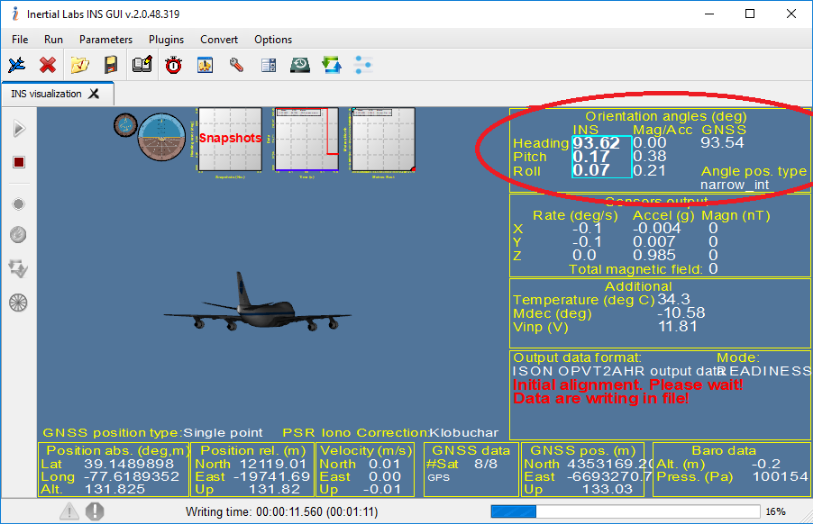Purpose: To determine which type of heading correction is best for different applications of the INS.
Last Updated: June 2020
For INS-D/DL: The “Dual GNSS” type of heading correction can be used for any application that allows the installation of the INS and two GNSS antennas with a baseline of at least 1.5 m (it can be static, quasi-static, and slowly moving objects as well as objects with high dynamic). So, any application where two antennas can be installed with a clear view of the sky and less than 1.5 meters away from one each other. When Dual GNSS type is used, the algorithm starts as soon as the GNSS receiver provides a heading solution.
Read More
Topics:
INS,
INS-D,
INS-DL,
INS-B,
INS-P,
GNSS,
Heading,
Magnetometer,
Correction
Last Updated: July 2019
Preface:
This document describes the steps of the firmware update procedure for the Inertial Labs GPS-Aided Inertial Navigation Systems (INS), Motion Reference Units (MRU), and Attitude and Heading Reference Systems (AHRS) with embedded DGPS receivers. It holds for all members of the INS family – INS-B, INS-P, INS-PD, the MRU family – MRU-B, MRU-E, MRU-P, and MRU-PD, as well as the AHRS products.
Read More
Topics:
MRU,
AHRS,
INS,
INS-D,
INS-DL,
INS-B,
AHRS-II,
update,
Guide,
Firmware
Purpose: Identify the pin outputs for the GNSS output on the INS-B, INS-P, INS-D, INS-DL
Read More
Topics:
INS,
INS-D,
INS-DL,
INS-B,
INS-P,
GNSS,
Pinout
Purpose: Diagnosing a common issue where the device is connect but heading as seen by device differs drastically compared to the GNSS heading.
Last Updated: July 2019
Common Issues:
1. The antennas are connected, but the heading of the INS starts with 0 (relative heading).
2. The INS heading differs a lot from the GNSS heading.
Read More
Topics:
Problem,
INS,
INS-DL,
Heading
Purpose: The purpose of this article is to show the steps to configuring usage of individual constellations, make sure to send these commands using an RS-232 connection and not to use Ethernet. It is critical that you follow these instructions carefully to not incorrectly configure the unit. If there is any uncertainty please consult a Customer Service agent. Developer options such as these may result in the Warranty of the device being voided.
Read More
Topics:
INS,
MRU-PD,
INS-D,
INS-DL,
INS-B,
INS-P,
Constellation,
GPS,
Navic,
QZSS,
GNSS,
custom,
BeiDou,
GLONASS,
Galileo


